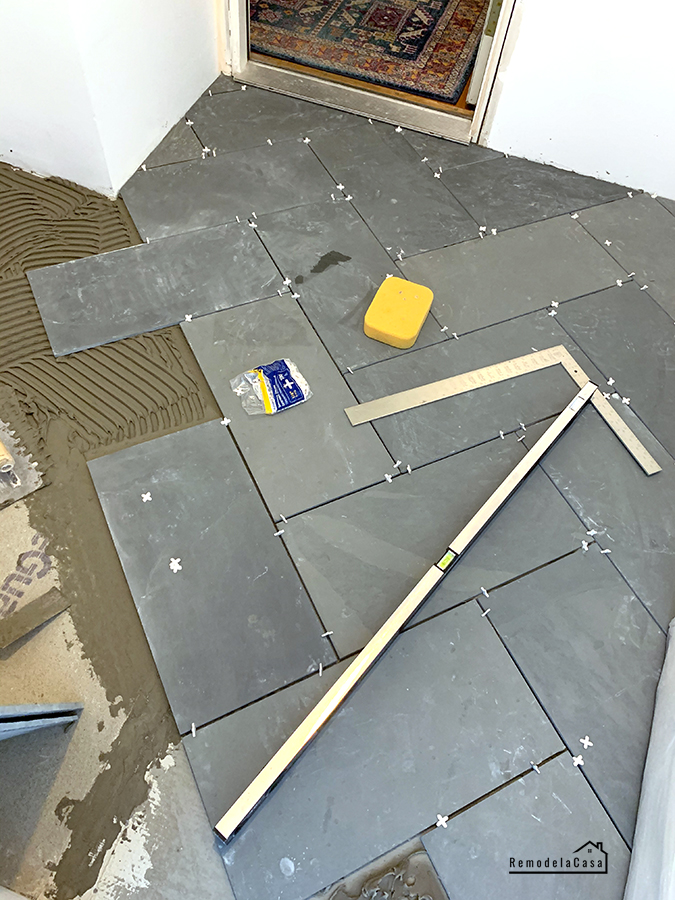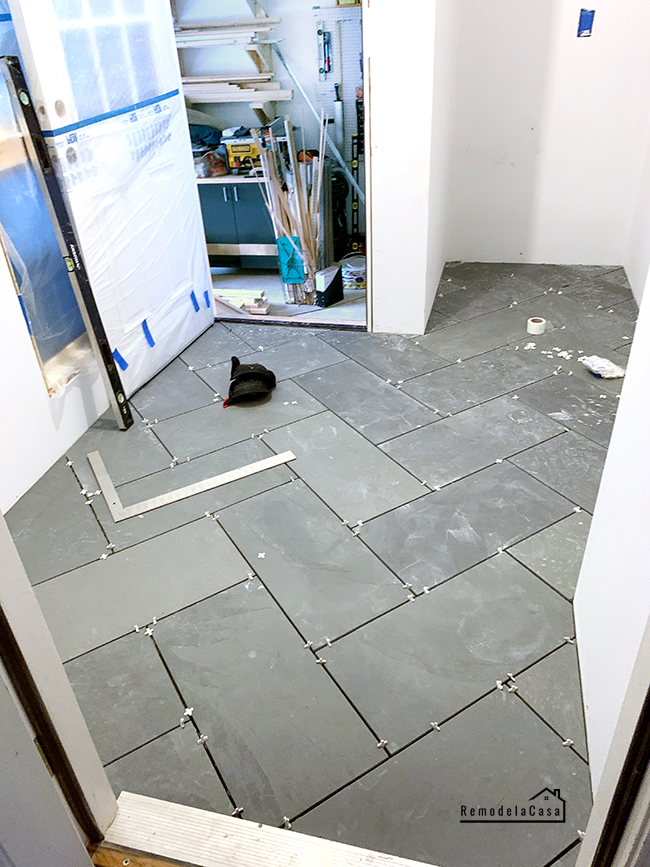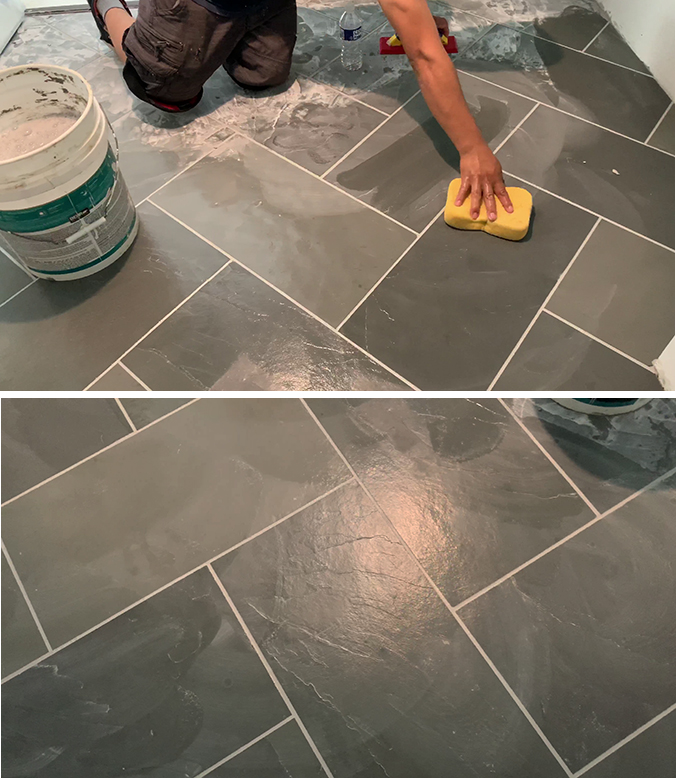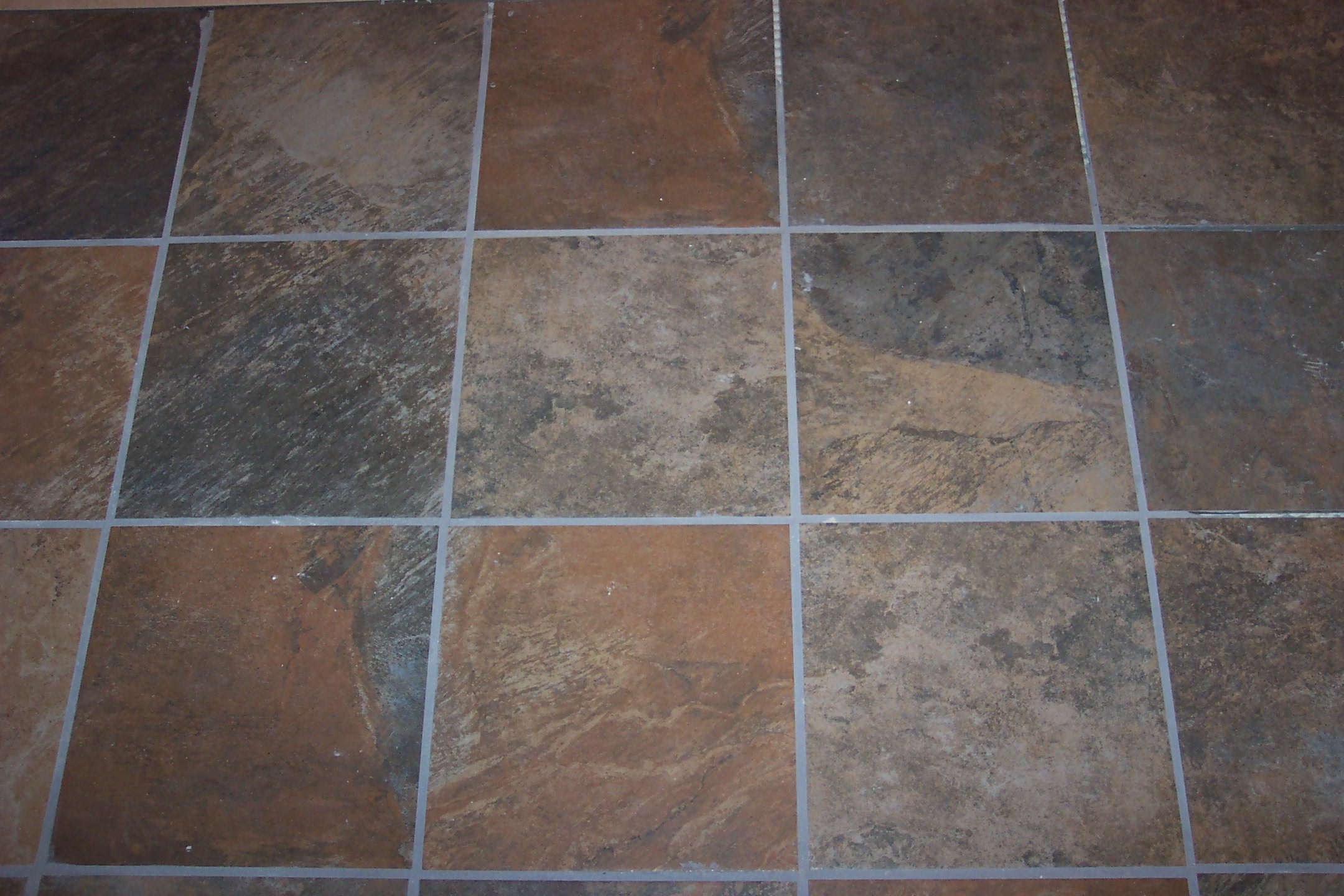As an experienced flooring professional, I am here to provide you with a straightforward and informative guide on installing a slate tile floor. Slate is a popular choice for flooring due to its natural beauty, durability, and versatility. Whether you’re looking to enhance the elegance of your home or add a touch of sophistication to a commercial space, a slate tile floor is a timeless option that can transform any room.
Before diving into the installation process, it’s important to understand the benefits of a slate tile floor. Slate is a natural stone known for its unique texture, rich colors, and inherent durability. It can withstand heavy foot traffic, making it suitable for high-traffic areas such as hallways, entryways, and kitchens. Additionally, slate is highly resistant to moisture and stains, making it an excellent choice for bathrooms and other areas prone to water exposure.
When it comes to installing a slate tile floor, proper preparation is key. Begin by ensuring that the subfloor is clean, level, and free of any debris or imperfections. This will provide a solid foundation for the tile installation and help prevent future issues such as cracking or shifting. It’s also important to apply a suitable moisture barrier if the subfloor is prone to moisture or if you’re installing the slate tile in a below-grade area.
Next, carefully plan the layout of the slate tiles. Take into consideration the size and shape of the room, as well as any architectural features or furniture placement. Dry-laying the tiles before installation can help you visualize the final result and make any necessary adjustments to achieve the desired pattern or design.
When it comes to installation, it’s crucial to use the right adhesive and tools for the job. Select a high-quality adhesive specifically designed for natural stone to ensure proper bonding and longevity. Follow the manufacturer’s instructions for mixing and applying the adhesive, and work in small sections to prevent the adhesive from drying too quickly.
As you lay the slate tiles, maintain consistent spacing between them for grout lines. A tile spacer can be used to achieve even and uniform spacing. Additionally, ensure that each tile is firmly pressed into the adhesive to ensure a secure bond.
Once the slate tiles are installed, allow the adhesive to dry completely before grouting. Select a grout color that complements the slate tiles and enhances the overall aesthetic. Apply the grout, fill the gaps, and remove any excess grout with a grout float or sponge. After the grout has dried, use a clean, damp cloth to wipe away any haze or residue from the tile surface.

Can I install a slate tile floor myself, or should I hire a professional?
While it is possible to install a slate tile floor yourself, it is recommended to hire a professional if you’re not experienced in tile installation. Properly preparing the subfloor, selecting the right adhesive, and achieving a level installation can be challenging for beginners. A professional installer will have the necessary expertise and tools to ensure a successful and long-lasting installation.
Does slate tile require any special maintenance?
Slate tile is relatively low-maintenance but requires regular cleaning and sealing to preserve its beauty and protect it from stains. Sweeping or vacuuming the floor regularly will remove dirt and debris, while a pH-neutral cleaner can be used for deeper cleaning. It’s also important to periodically reseal the slate to maintain its resistance to moisture and stains. Consult with your tile supplier or installer for specific maintenance recommendations.
Can slate tile be used in wet areas, such as bathrooms or showers?
Yes, slate tile is suitable for wet areas such as bathrooms and showers. Its natural resistance to moisture makes it a durable and long-lasting option. However, proper installation techniques and sealing are essential to ensure water doesn’t penetrate the grout lines or underlying substrate. Consult a professional installer to ensure the slate tile is installed correctly for these specific areas.
Is slate tile suitable for outdoor use?
Due to its durability and resistance to extreme weather conditions, slate tile is often used for outdoor applications, such as patios or pool surrounds. However, it’s important to select slate tiles specifically rated for outdoor use and follow proper installation practices. This includes using a suitable adhesive, sealing the tiles, and ensuring proper drainage to prevent water accumulation.
Can slate tile be installed over an existing floor?
Slate tile can be installed over an existing floor in certain situations. However, it’s important to assess the condition and stability of the existing floor before proceeding. Any loose or damaged tiles should be repaired or removed, and the surface should be properly prepared and cleaned before the slate tile installation. Consulting with a professional installer will ensure that the existing floor is suitable for the installation of slate tiles.
Installing a slate tile floor can add beauty, durability, and timeless elegance to any space. You can achieve a stunning and long-lasting result by properly preparing the subfloor, selecting high-quality materials, and following proper installation techniques. Whether you choose to install the slate tile yourself or hire a professional, a well-executed installation will create a captivating and durable floor that will be enjoyed for years.
Blue Mountauk Slate Tile Install – Remodelando la Casa
Avente Tile Talk: Installing a slate tile floor
How to Install a Slate Tile? – The Constructor
How to lay slate floor tiles
Blue Mountauk Slate Tile Install – Remodelando la Casa
Blue Mountauk Slate Tile Install – Remodelando la Casa
Blue Mountauk Slate Tile Install – Remodelando la Casa
Pros and Cons of Slate Flooring HomeAdvisor
slate tile floor tipsLearning Center
Laying Slate Tile in Thinset
3 Great Reasons to Install a Slate Tile Floor in your Home
Related Posts:
- Beach House Tile Flooring
- Retro Broken Tile Floor
- Best Way To Clean New Tile Floor
- Coral Tile Flooring
- Tile Floor Room Transitions
- Old World Tile Flooring
- Slip Resistant Porcelain Tile Flooring
- Best Way To Mop Ceramic Tile Floors
- How To Clean Terrazzo Tile Floors
- Driftwood Ceramic Tile Flooring










